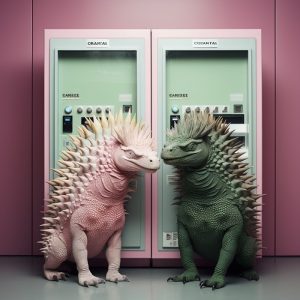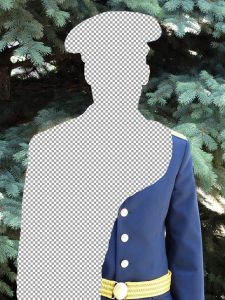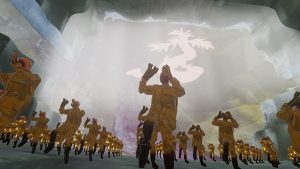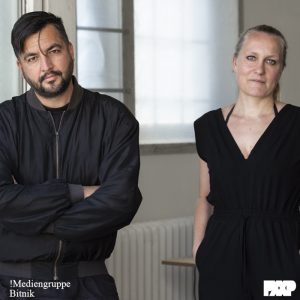One of the most noteworthy moments of Transmediale -the festival for contemporary art and digital culture that opens every year in Berlin during the legendary toe-freezing February- took place in the bus number 100 that goes from the HQ of the festival in Haus der Kulturen der Welt to Alexanderplatz. A group of teenagers were talking about the festival, what they had seen, liked and dis-liked and how participants of the conference were dressed. Turns out that their views and expectations about the festival were strikingly different from mine. Earth shattering experience for naive me. I had never given much thoughts about the audience of events like Transmediale. My attention never went much further than the usual circle of people i know and the people they know. Artists, curators, the press… people whose work involves seeing, discussing and dissecting media art on an almost daily basis. But one does not a festival make with the sole presence and approval of ‘insiders’. As media festivals become less of an oddity on the cultural agenda of a city, should directors and curators cater mostly for the usual suspects or should they try and please the broad public? Is it possible and desirable to satisfy everybody’s expectations?
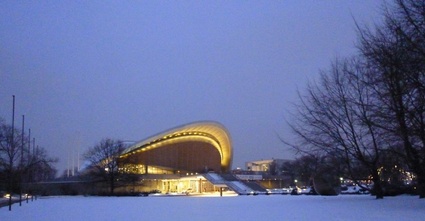 Haus der Kulturen der Welt
Haus der Kulturen der Welt
I don’t have an answer for that but i’m working on it. The bus 100 experience made me realize that the issue of which kind and amount of audience i should attract has ceased to exist for me as an art blogger. I stopped worrying about stats, traffic and incoming links a while ago. I know that’s not the smartest thing to do but so far so good. I’m not responsible of an international event after all. I just focus on being a conscientious, subjective and lazy blogger. Anyway, those comments i heard that night on the bus certainly put the main exhibition of the festival into a whole new perspective for me.
The title of the exhibition, Future Obscura, nods to the general theme of the festival, Futurity Now! but it also refers to the camera obscura, an optical device that led to photography.
I wish the title had not been taken so literally: artworks were shrouded into under-lit rooms and black drapes. Sometimes quite unnecessarily.
Guest curated by Honor Harger, the show explores the idea of futurity through a re-appropriation of image-making devices and techniques. Boundaries of the time continuum are broken down by artists. Their work allows us to peer into a (a)temporality that questions this increasingly foggy notion of what we used to think of as the future (Villa Harpeland swift flying cars, anyone?)
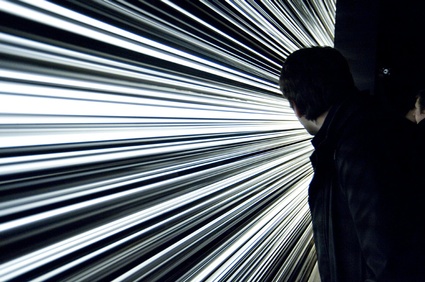 Zilvinas Kempinas, White Noise, 2007 (photo Jonathan Gröger)
Zilvinas Kempinas, White Noise, 2007 (photo Jonathan Gröger)
Simple and quietly mesmerizing, Zilvinas Kempinas‘ screen of “white noise” was one of the superstar of the shows. Seen from afar, the screen vibrates and sounds like the fragmented black and white pixels of an untuned video source. As they move forward, visitors realize that the screen is an opening into the wall stretched with horizontal lines of videotape vibrating in the currents of air created by fans. Unlike a magic trick which looses its spell as soon as the artifice behind it is revealed, White Noise gets more fascinating the closer you get to understanding it.
Kempinas’ installation breathes new life into an almost ‘dead media’, reminding us that tape is both a physical object and container of information.
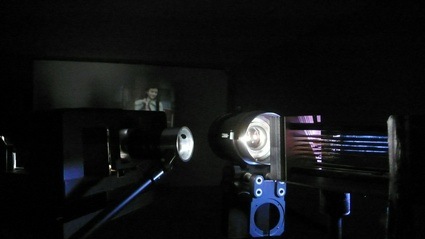 Julien Maire, The Inverted Cone. Image credit lmlrpt
Julien Maire, The Inverted Cone. Image credit lmlrpt
In his 1896 book Matter and Memory philosopher Henri Bergson explains that the base of the “memory cone” represents the entire collection of memories of our lived past, whilst the peak of the cone is our present condition, and our memory of the past at the time we interact with the world.
Julien Maire‘s installation The Inverted Cone is the one that, in my view, embedded the best the subject matter of the exhibition by translating Bergson’s memory cone into an optical process.
Family pictures, pedagogic images and other slides bought on a flee market are projected with a slide projector. Instead of appearing larger on a screen, the still image is reduced by lenses and is concentrated on a “Digital mirror“.
A video beamer connected to a camera films the hand of the performer as he organizes small pieces of paper. Each paper opens a window in the projection. By moving the pieces of paper on a table, the performer uncovers and reconfigures a global memory or performs a selective remembrance of a moment. Old and new media are mixed in one shot.
In The Inverted Cone, digital and analogue images pass through the same lens and viewers experience distinct chronologies simultaneously.
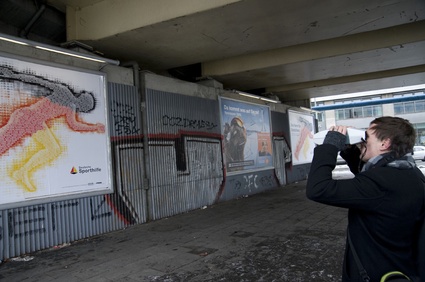 Julian Oliver demonstrating The Artvertiser. Image by Jonathan Gröger
Julian Oliver demonstrating The Artvertiser. Image by Jonathan Gröger
On the other hand, The Artvertiser, by Julian Oliver, Diego Diaz, Clara Boj and Damian Stewart tackles that technology that screamed ‘future’ a few years ago and ‘where did it go wrong?’ today. The augmented-reality project passes urban spaces dense with advertisements through the lens of a binocular device that replaces publicity by art. The Artvertiser software recognises individual advertisements, and uses them as a virtual ‘canvas’ to display artworks.
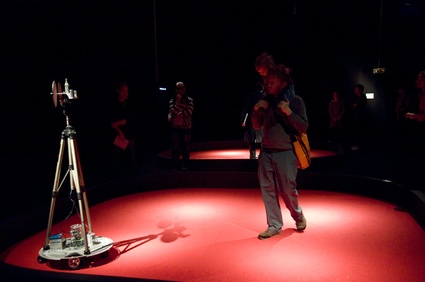
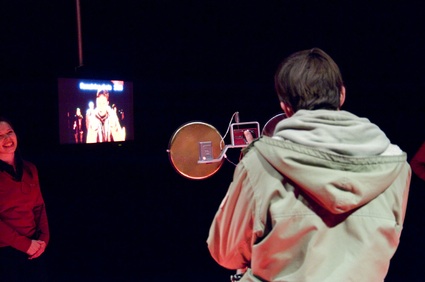 Ken Rinaldo, Paparazzi Bots (photo Jonathan Gröger)
Ken Rinaldo, Paparazzi Bots (photo Jonathan Gröger)
Ken Rinaldo‘s Paparazzi Bots is very much anchored in the present.
Three autonomous robots move at the same speed of a walking human. Their main purpose is to take photos of people and to make these images available to the press and the web as a statement of culture’s obsession with ‘celebrity image’ and especially our own images. This infatuation with portraits makes us overlook the signs and downsides of surveillance technologies.
The robots don’t take pictures of every person they encounter. Instead, they select an individual and ignore other people in the audience, based on criteria such as, whether or not the viewers are smiling or the shape of their smile.
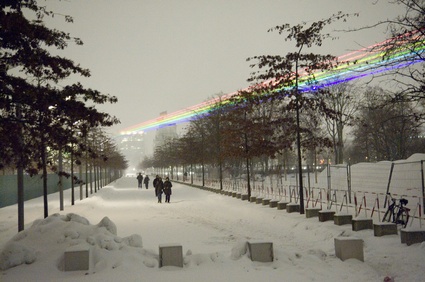
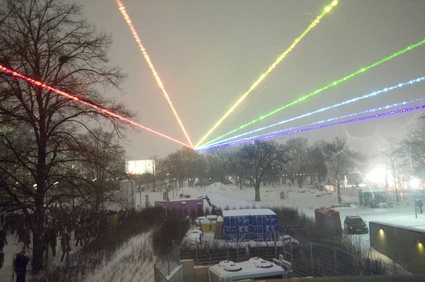
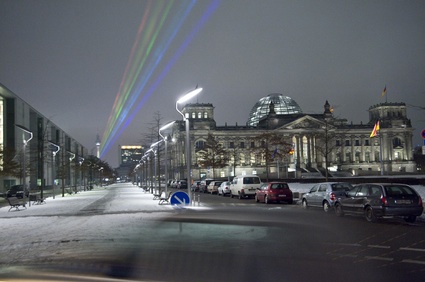 Yvette Mattern, From One To Many, 2010 (photos Jonathan Gröger)
Yvette Mattern, From One To Many, 2010 (photos Jonathan Gröger)
Yvette Mattern‘s stunning laser rainbow projection, From One To Many, blazed through Berlin’s night sky over three evenings, enabling any Berliner devoid of a festival pass or even knowledge that the festival ever existed to enjoy the spectacle.
The rainbow rose diagonally from the roof of the Haus der Kulturen der Welt, crossed a distance of 3 km and reached to a point approximately 250 metres up the shaft of the Fernsehturm (TV tower) on Alexanderplatz.
Another version of the project was shown a year ago in New York City, under the name Global Rainbow.
My pictures from the festival.
Related: Cloud Core Scanner – an artistic experiment in zero gravity.


